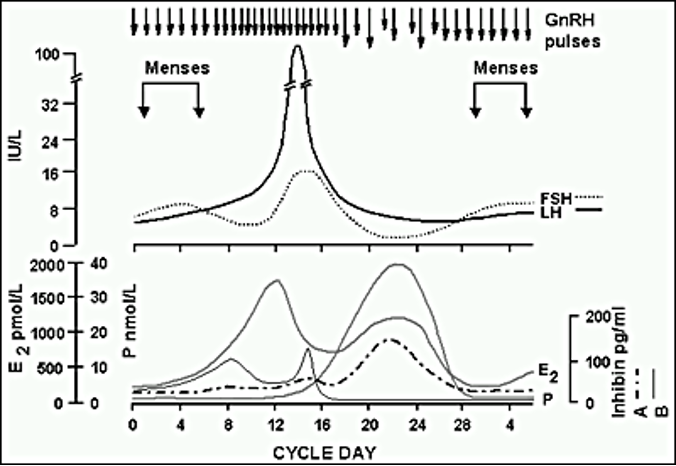
Figure 1. Hormonal oscillations through the menstrual cycle. In the early follicular phase of the menstrual cycle, the initial increase in FSH stimulates follicular recruitment and maturation. The consequent secretion of estradiol (E2) selectively inhibits FSH release (needed for selection of the dominant follicle) and maintains rapid GnRH pulsatility during the late follicular phase. The persistent rapid GnRH pulses increases LH, which further stimulates E2 secretion, culminating in positive E2 feedback to produce the mid-cycle LH surge. During the LH surge, GnRH levels appear to be consistently elevated and remain elevated as LH declines, suggesting that the frequency of GnRH pulse has become very rapid or continuous, which results in desensitization of LH secretion (possibly the mechanism to terminate the LH surge). After ovulation, luteinization of the ruptured follicle results in progesterone secretion which reduces the frequency of GnRH pulses. With the demise of corpus luteum, E2, progesterone and inhibin levels fall, and the GnRH pulse frequency increases, leading to follicular maturation in the next cycle. (Adapted from: Marshall JC, Dalkin AC, Haisenleder DJ, Paul SJ, Ortolano GA, Kelch RP. Gonadotropin-releasing hormone pulses: regulators of gonadotropin synthesis and ovulatory cycles. Recent Prog Horm Res. 1991;47:155-187)
